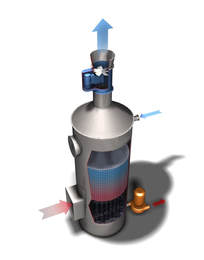|
Thermal Energy International is at PaperWeek 2018 in Montreal, Quebec. PaperWeek Canada is the most important annual conference and tradeshow serving the pulp and paper and forest products industries in Canada. We were happy to attend and take part in the discussion and exchange of ideas encompassing technology, operational improvements, and business development among the sector's key players. Above: Our advertisement in the February edition of ACCESS Magazine, on display at PaperWeek Canada. Check out our article in ACCESS Magazine featuring an update on our energy efficiency mega project with Resolute FP Canada in our prior post, here.
0 Comments
Back in December we announced an $11 million energy efficiency project with Resolute FP Canada Inc. The project, which included the installation of two FLU-ACE® Heat Recovery Systems and the conversion of the mill’s steam traps to Thermal Energy’s proprietary GEM Steam Trap system, represents the Company’s largest heat recovery and largest GEM orders to date. Recently, four of our engineers went to the Resolute pulp and paper mill in Thunder Bay, Ontario to conduct an onsite survey and specification process to properly size and replace the facility’s existing mechanical traps with high-efficiency GEM Steam Traps. For more details on this project, please read our article below courtesy of ACCESS Magazine. Thermal Energy International implemented a FLU-ACE® Condensing Heat Recovery System on the pulp machine exhaust at a pulp mill in Canada. Heat sources considered for the application included boiler plant flue gas, lime kiln scrubber exhaust, smelt dissolving tank scrubber exhaust, pulp dryer exhaust, and recovery boiler exhaust. Ultimately the pulp dryer exhaust was selected due to its proximity to users, high temperature and humidity, steady flow, and low fouling potential. The FLU-ACE system was designed to deliver some 50 MMBtu/hr of energy to plant systems (peak winter performance), saving 50,000 pounds and hour of steam to be fed back into existing steam turbines to generate more electricity. This energy was previously discharged and lost to the atmosphere in the form of hot air and water vapor in the pulp dryer exhausts. The “free energy” from the exhaust was used to heat and preheat:
The system was implemented on a turn-key basis and was completed on budget and schedule. |
Archives
August 2021
Categories
All
|






 RSS Feed
RSS Feed